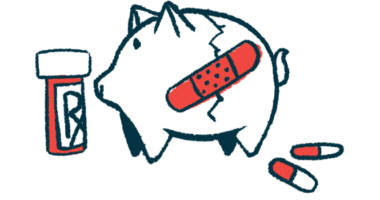Adherence to PoNS device key to improving walking in MS: Study
Greater gains in walking function seen for patients adhering to regimen

People with multiple sclerosis (MS) who better adhere to an at-home therapy regimen with the PoNS device — which provides electrical stimulation to the brain and is approved for use in combination with physical rehabilitation — may experience greater improvements in walking function.
That’s according to early data from PoNSTEP (NCT05437276), a real-world study that’s testing how adherence to the 14-week PoNS therapy regimen reflects on changes in gait, or walking ability, among MS patients. Full data from the observational study are expected early next year, after the six-month follow-up phase has been completed.
According to Helius Medical Technologies, the developer of PoNs, these early results provide strong evidence about the importance of people with MS adhering to their treatment plan.
“We are encouraged to see the meaningful gait deficit improvements in patients who were consistently compliant with their therapy regimen,” Antonella Favit-Van Pelt, MD, PhD, Helius’ chief medical officer, said in a company press release.
Patients used PoNS device at home for up to 2 hours daily
The PoNS device is designed to improve walking and balance in people with mild to moderate MS. It delivers gentle electrical pulses to the tongue, which are transmitted to the brain through two major cranial nerves.
Used as a short-term therapy, this electrical stimulation is intended to promote the brain’s ability to rewire itself in response to new experiences. When used in combination with physical rehabilitation, the device promotes the development and strengthening of neuronal circuits related to a given task, boosting the benefits of physical therapy.
However, poor adherence to the therapy regimen, which involves using the PoNS device for 100 minutes (slightly longer than 1.5 hours) to 120 minutes, or two hours, daily for 14 weeks, may limit its benefits.
“As physicians, we often face challenges with patients embracing the importance of fully complying with their rehabilitation program,” Favit-Van Pelt said.
Knowing compliance can be an issue, the company sponsored the PoNSTEP study to test how adherence to treatment with the PoNS device reflects on improvements in gait. The trial enrolled a total of 41 adults, ages 22 and older, with a diagnosis of MS and difficulty walking, who received treatment in a real-world clinical setting.
The participants engaged in a therapy regimen that included two weeks of in-clinic PoNS treatment supervised by a certified physical therapist, followed by 12 weeks, or about three months, of unsupervised therapy at home.
Altogether, 38 patients (93%) completed the 14-week therapy regimen. All are now being followed for an additional six months to assess for long-term benefits.
The PoNSTEP study provides compelling evidence on how, with any self-directed at home physical therapy activity, adherence can significantly determine how much functional improvement any patient can achieve.
The initial results showed that the PoNSTEP study achieved its primary goal of demonstrating significant improvements in Dynamic Gait Index (DGI) scores after the 12 weeks of unsupervised therapy. Higher DGI scores indicate a better ability to maintain walking balance in various conditions while responding to different tasks. The goal of showing a link between adherence and DGI improvements in this period was also met.
For Favit-Van Pelt, “the PoNSTEP study provides compelling evidence on how, with any self-directed at home physical therapy activity, adherence can significantly determine how much functional improvement any patient can achieve.”
Early results provide ‘confirmatory evidence’ of adherence benefits
In the two weeks of in-clinic PoNS therapy, average therapy adherence was nearly 90% with a mean improvement of 2.5 points in DGI scores, according to Helius. At home, average therapy adherence was 67%, with an additional 2.8-point improvement in DGI scores, the company reported.
While adherence was not associated with the degree of improvements in the supervised part, a significant association was observed in the unsupervised period.
Overall, during the 14 weeks of treatment, therapy adherence averaged greater than 70%, resulting in an average five-point improvement in DGI scores. Among those with high adherence (70% or more), 65% saw a five-point improvement, and 74% experienced at least a four-point improvement.
These data “confirm the importance of the at-home rehabilitation part of PoNS therapy, following the supervised in-clinic treatment, in achieving optimal gait deficit improvement results,” said Salvatore Napoli, MD, medical director of the Neurology Center of New England in Foxboro, one of a total of six study sites.
In line with clinical studies and real-world data, half of the patients who used the PoNS device for the recommended 100-120 minutes per day — who achieved 85%-100% adherence, respectively — improved their DGI scores by more than six points over the 14 weeks of therapy.
According to Favit-Van Pelt, “the study’s preliminary results provide material confirmatory evidence of the therapeutic benefits of PoNS therapy for gait deficit improvement in people with MS and strengthen the body of clinical evidence pointing to the importance of utilizing the therapy at the recommended dose regularly and consistently.”








